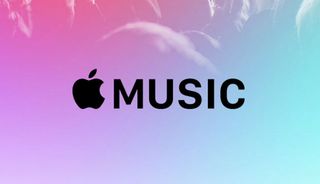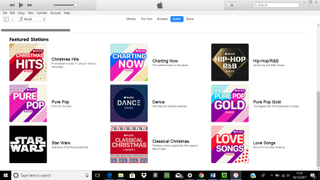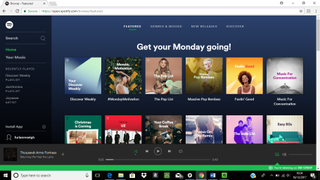
There are many streaming services to choose from. But there are only two real contenders for the stop slot, Spotify and Apple Music.
As these two titans battle for total dominance of our music streaming allegiance, we consumers reap the rewards as both services has transformed themselves to compete.
Spotify has the advantage at the moment with a much larger user base. 2018 changes also make this the only one to pick if you don't want to pay. Apple may offer a Music trial, but Spotify lets you curate 15 playlists you can play as much as you like without shelling out a dime.
However, that doesn’t mean that Apple is out of the running. Designed and backed by one of the most recognisable brands in the world, Apple Music has increased its standing tenfold thanks to plenty of exclusive releases and seamless integration with iOS devices. You'll want Apple Music if you're thinking of buying a HomePod too.
Unfortunately, for the average user it’s not always easy to discern which service is right for you in terms that actually make a difference to your day-to-day life. So, to help you choose the right one for you, we’ve broken down the pros and cons of each service so you sign up and start listening.
Apple Music

How big is its music library?
When it comes to raw numbers, Spotify isn’t as dominant as it first appears.
While Spotify touts more than 30 million songs in its virtual catalog, Apple Music has more than 40 million to choose from. It’s a significant advantage, enabling Apple to offer a broader range of tracks in each genre and subgenre. So if you’re into French skiffle or Brazilian electro pop and you’re struggling to find your more obscure artists, there’s a great chance Apple Music will have you covered.
Plus, this being an Apple product, its interface is easy to navigate both on a Mac/PC and in more portable forms such as smartphone or tablet and you can download tracks to take them with you when you’re away from a Wi-Fi connection. It’s a feature Apple Music shares with Spotify, but it’s a vital one if you want to keep users signing up to the paid version.
How much does it cost?
Unlike Spotify, which offers both free /and/ paid versions, Apple Music only offers a free trial version before it requires you to sign up.
It’s understandable from a business POV - especially with so many exclusives serving as a golden carrot for potential users - but not having any form of long-term free-to-use version has ultimately worked against Apple’s desire to increase its overall user base.
Free trials are limiting, especially to those looking to experience the service on a long term basis. Giving users limited access to the full experience of its service might seem like a better deal in the short term, but it suffers in the long-term compared to the free/ad-filled version Spotify offers.
Still, having three different payment plans does show Apple wants its users who are willing to cough up a more dynamic approach. Having a cheaper plan aimed at students (£4.99/$4.99) is a great deal (but not an exclusive one as Spotify offers something similar), especially as this rate still gives you access to every facet of its service. For everyone else its £9.99/$9.99 for an individual, or £14.99/$14.99 for a family subscription for up to six people

What exclusive benefits does Apple Music offer?
Admittedly, Apple has gone to great means to cut Spotify and the smaller music streaming services out of the picture by signing some of the biggest names in popular music to exclusivity deals on new albums.
So far, Apple Music boasts albums from Drake, Taylor Swift, Britney Spears, Frank Ocean, Future and more and it’s a strategy that’s really rankled Spotify over the years. Of course, if you’re not a fan of these artists then this feature might not be game-changer, but if you do then it’s a serious trump card.
Apple Music also offers Beats 1, the vanguard for a wider push towards original broadcasting on the service. It’s a 24/7 radio station that offers round the clock playlists and live DJs. It’s an internet radio station backed by Apple, so it’s as slick as you might imagine with the likes of former Radio 1 DJ Zane Lowe and more on its roster. With Apple already planning more stations for the service, this original broadcasting angle is a facet Spotify simply has no answer for.
There’s also an exclusive social feature called Connect that’s packed is as part of the Apple Music package. It’s essentially a way for artists to link up with fans in a more intimate fashion, offering access to new singles, videos and messages.
Connect might seem something designed for the bigger bands, but it’s open to any artist, offering a service not too dissimilar to what MySpace was back in its heydey. For followers, it’s simply a simple yet effective way to get a little closer to the bands you love.
Finally, there’s the exclusive video content. With its integration with iTunes, the ability to browse and play tons of music videos adds a dimension Spotify simply doesn’t offer. And Apple Music is doubling down on the visual side with original programs such as Carpool Karaoke: The Series (a longer version of James Corden’s uber-popular celeb singing skit on The Late, Late Show) and Planet of the Apps (a Dragon’s Den-esque show for app and software developers).
What’s it like to use?
While both the desktop and portable versions are great to look at (aesthetics, after all, is Apple’s thing to a tee), there’s a disparity in the user experience between the two: Apple Music's Mac, PC or laptop version is much superior to the one you'll find on your phone or tablet. That's because the continued use of larger images and boxes suits a larger screen, and it’s really easy to navigate through your playlists, exclusives and your imported iTunes library.
That said, the setup does suit using larger tablets, as having more screen real estate makes the larger icons and more content-heavy focus a far more agreeable experience.
The version optimized for smartphones isn’t broken by any means, but its large icon design often makes it a little fiddly to use since it doesn’t use the smaller screen of a phone to its advantage. Also, launching to your library simply doesn’t make any sense for a service that’s geared towards new music updates.
Spotify
Advertisement

How big is its music library?
Spotify currently boasts over 30 million songs. Sure, it’s not quite as many as Apple Music right now, but with an average 20,000 new songs being added a day we wouldn’t be surprised to see Spotify eventually match and even exceed its biggest rival.
Spotify’s strong influx of tracks has helped jettison it into the stratosphere, with a heavy focus on promoting new tracks and breakthrough artists. Curated playlists are almost always the first thing you see when you load any version of the app, with the service seemingly designing playlists for almost every musical subgenre. These are constantly being updated too, so your favorite ones never grate following extended use.
Discover Weekly, the playlist based off your listening preferences, has come leaps and bounds in the last few years with the nuances of its suggestions, although Apple’s For You playlist (introduced in 2016) now largely offers the same feature so it’s no longer the special boon it was once.
How much does it cost?
So now we get to one of the main reasons why Spotify has always held Apple Music at bay (apart from the fact Spotify isn’t limited to one operating system) - paid and unpaid access. While its trialed a few different versions over the years, Spotify has always come back to the basic formula that’s worked best - everyone can sign up and access every track in its catalog for free.
There are ads every few songs, but you can tailor 15 playlists that feature the songs you want. You also get access to top curated playlists like Discover Weekly. In the past you did not have full control over playback, and were only able to skip a limited number of times per hour.
Rather than locking content behind a paywall, Spotify wisely seals away features that simply make the service more dynamic. Want to listen to music without any adverts? Want to download as many tracks as you want to your smartphone to listen to them when away from home? Want to the ability to skip songs as and when you want on your tablet/smartphone? Then it’s time for Premium.
It’s a business model that might seem crazy on paper, but it’s the ideal way to increase your user base by making the whole experience awkward just enough to get those users coughing up.
What exclusive features does Spotify offer?
Here’s the thing, right now, you really don’t get much that really sells the exclusivity of using Spotify. Sure, there are podcasts that are exclusive to the platform (along with plenty of others you can find on iTunes or Stitcher), but Spotify has never been that interested in that corner of the market.
Video was an area Spotify has dipped its toes into, thanks to deals with the likes of ESPN and Comedy Central bringing some of their shows to Spotify users. However, neither seem to be resonating with users as rumor has it that Spotify might scrap its current slate of shows entirely and head straight back to the drawing board. It’s unlikely it will abandon video entirely, but it’s clear the current plan isn’t working.
Low-data mode is one 2018 extra. It caches some audio for when you lose signal, and uses less of your data allowance. 75 per cent less according to Spotify. Of course, if you have a Premium sub you can just download songs over Wi-Fi anyway.

What’s it like to use?
Spotify has had its fair few updates over the years, but it’s hard to deny how well the current UI works. Unlike Apple Music, it’s a service that’s clearly been redesigned and tweaked with smaller screens in mind thanks to the raft of options available on screen at any one time. Whether you’re downloading an album or playlist to your phone or starting a radio channel based on an artist, it’s a consistently intuitive experience.
The tile system is just small enough to make selecting new albums and playlists easy while packing in plenty of content into a timeline of content that’s ultimately curated to what you’ve been listening to and what you might want to jump into next. Spotify might just have as many playlists as it does albums, but it’s a strategy that works as its algorithms ultimately tailor the app to each user.
Being able to work with multiple platforms is another huge asset. Being able to work on almost any type of smartphone and tablet increases the scope for its audience and the UIs for all these platforms are uniformly strong. Being able to play Spotify from your console - such as the version running on PS4 - is a massive tick for the service, as is the ease with which you set it up. Overall, Spotify is currently winning the UI war.
Verdict
Advertisement
Overall, both services come with their pros and cons and each one will suit a user looking for different things from a music streaming platform: Spotify offers a more well-rounded experience that’s effectively open to everyone, but its mobile experience is limited unless you’re willing to go Premium. Apple’s three-month free trial does give you a taste of its service, but its fiddly mobile design remains at odds with its impressive library and exclusive content. As it stands, Spotify remains the stronger service overall, but unless it starts upping its original content, Apple Music won’t remain in second place for long.
Comments
Post a Comment